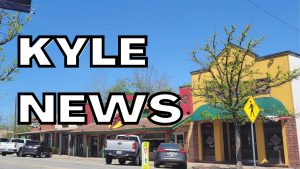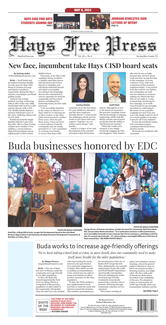By Moses Leos III
For the first time in Kyle’s history, city leaders got a chance to view the condition of the city’s vast network of roads.
On March 15, the Kyle City Council received a presentation on the preliminary results of a pavement assessment commissioned by the city.
With the assessment conducted on roads in their entirety, Public Works Director Harper Wilder said the city would have to pinpoint specific problem areas on streets before completing a final report.
Civil Engineering Consultants (CEC) conducted Kyle’s pavement assessment, which was commissioned in December 2015 at a cost of roughly $80,000, in conjunction with Applied Research Associates. The assessment evaluated approximately 124 miles of roadway in Kyle. The assessment excluded roads under the $36 million road bond.
According to Wilder, the assessment was part of the city’s annual report on the status of Kyle roads. He said it was used as a “starting point,” as the city had never before completed a pavement assessment.
The assessment scored roads based on a 0 to 100 scale and measured two different criteria.
One criterion, the Pavement Condition Index, measured the physical conditition of the road, which assessed cracking and potholes. A second score was given for ride condition, or the “rideability” of roads, which Wilder said residents are familiar with.
“We may have roads with no potholes, but rides like a roller coaster,” City Engineer Leon Barba said. He added roads with ride condition issues were roads that were under-designed or were built on top of clay.
According to preliminary findings, 86 percent of Kyle roads scored above a 60, which was “good” or “better.”
Barba said the 86 percent score was due to new subdivisions in the city, and that they are “all in good shape now.”
But according to the preliminary findings, roughly 40 percent of Kyle roads scored “fair” or “poor” on ride condition.
But he said a majority of the ride condition concerns came from roads on the east side of Interstate 35.
“Typically you see it on the east side, but also pockets of clay on the west side, too,” he said.
The preliminary assessment also discovered five roads in Kyle that scored poorly on both the PCI and ride condition.
Barba said the city will discuss which street is priority before beginning any possible improvements.
In addition, Wilder said the list could be subject to change after the city meets with CEC regarding “discrepancies” in the imaging done for the assessment.
According to Wilder, the city initially didn’t go in-depth as a cost saving measure.
“Overall, I thought it was a good assessment, but I do think there were discrepancies that we’re working out,” Wilder said. “Not with the firm, but with the imaging.”
Barba said the city would work with CEC to determine a standard score for all roads to meet in the future.
He said it would help the city determine the number of dollars to place in not only specific improvement projects, but also pavement maintenance.
“Pavement maintenance is like an animal. You have to feed it,” Barba said. “If you don’t feed it, it’s going to die.”
He said the city plans to conduct a follow up road assessment in three to five years to determine the effectiveness of improvements. He said the city will be able to work on improving arterial and residential streets.
“The point of pavement management is spending money on good roads, but focusing on arterials and collectors. If you lose those, you lose the battle,” Barba said. “We have the opportunity to not only work on collectors, but also spend money on residential streets, so they don’t get as bad. You don’t want them out of shape.”
Pavement Condition Index Scores in Kyle
*scores range from 0 (worst) to 100 (best)
87.01 miles (70.02%) – Great (80 or above)
20.35 miles (16.38%) – Good (60 to 80)
7.61 miles (6.12%) – Fair (40 to 59.99)
6.94 miles (5.58%) – Poor (25 to 39.99)
2.36 miles (1.90%) – Very Poor (less than 25)







